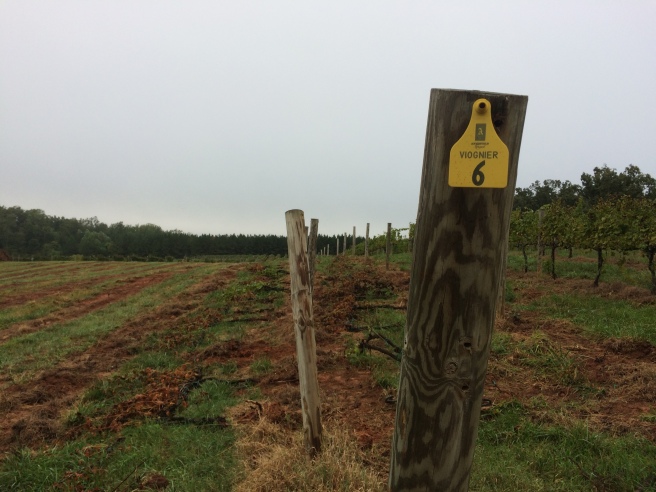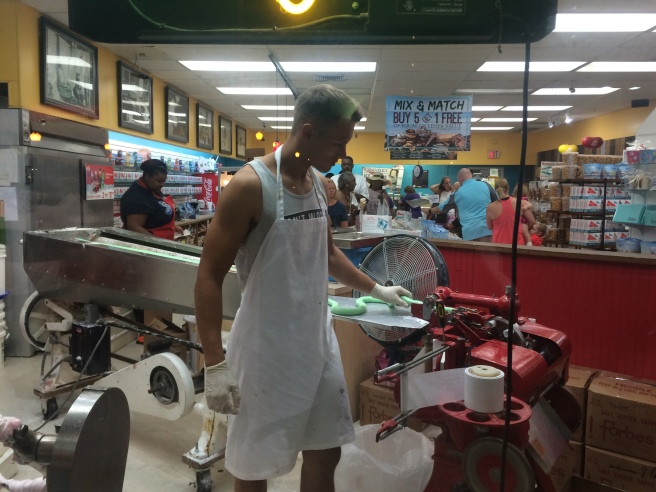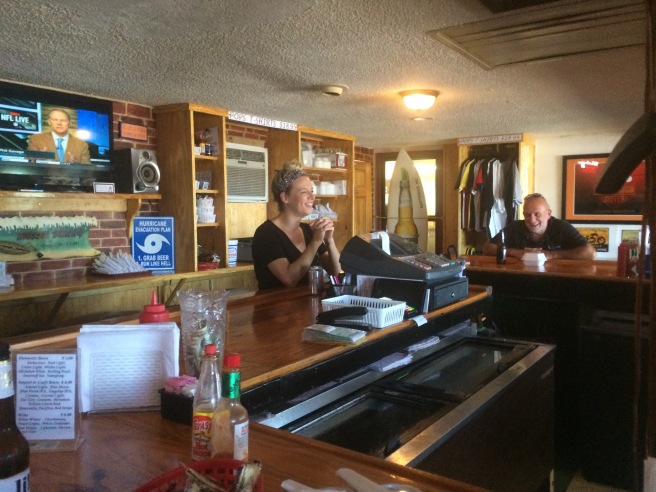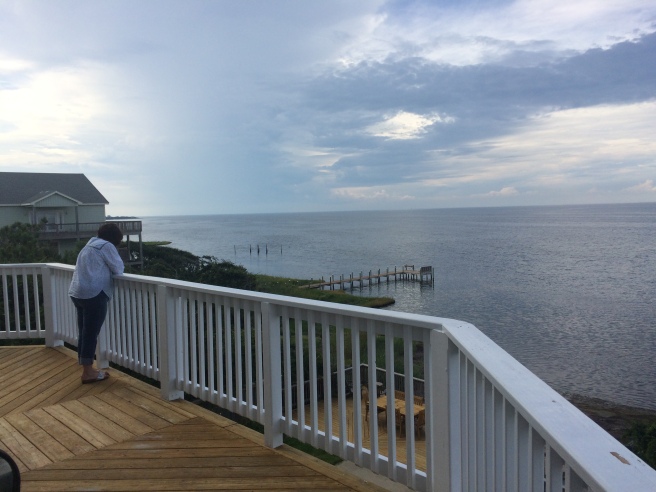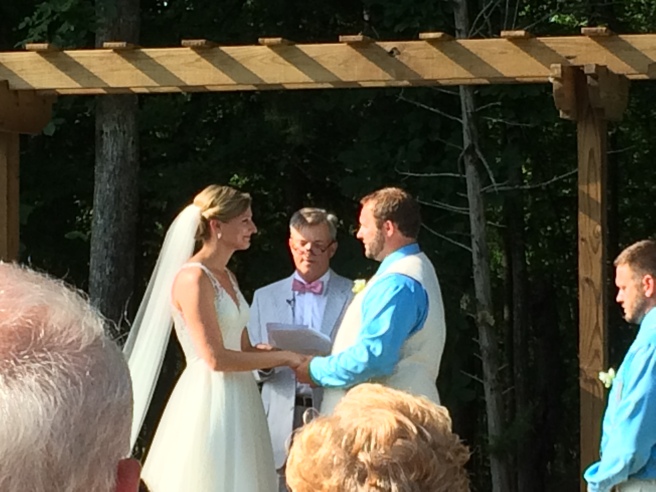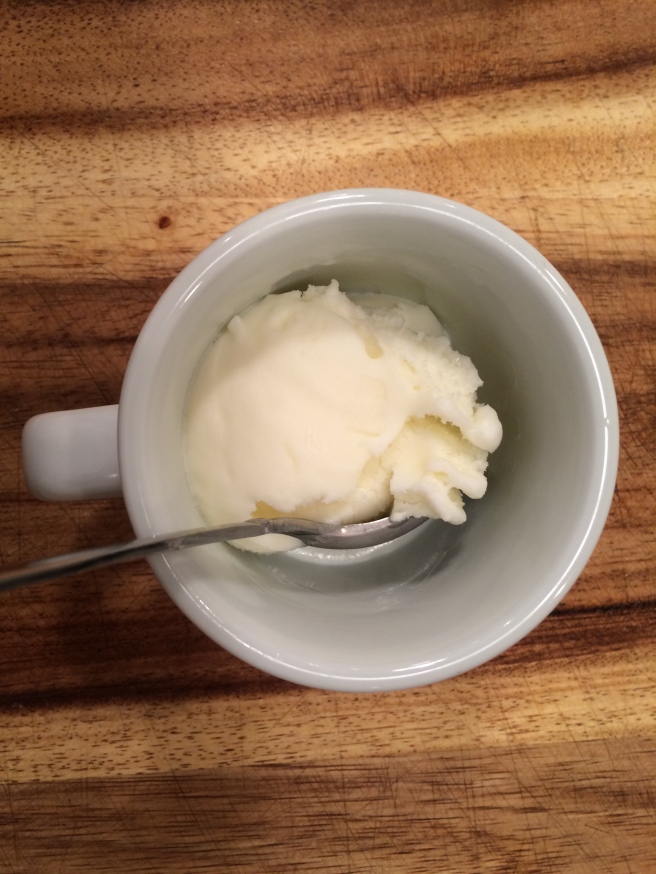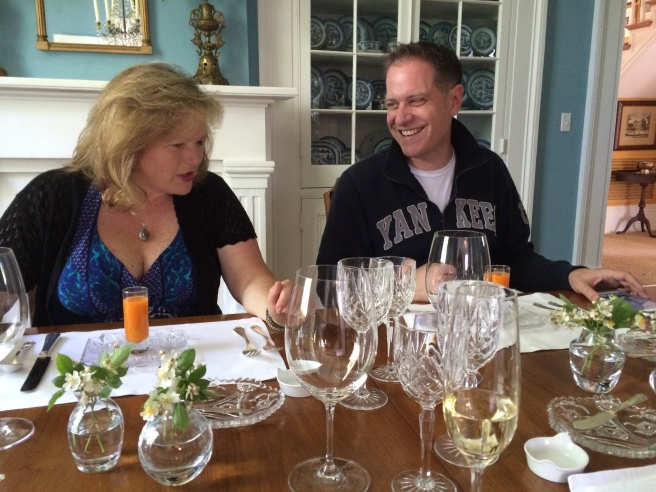Ten years ago we embarked on an exciting adventure, building a wine business in sleepy Southside Virginia. We had grand aspirations — multiple vineyards and a winemaking facility that would be no less than a temple dedicated to Virginia wine — something hip, but respectful of the architecture of the region. The plan included promoting the region by applying for and getting designated an American Viticultural Area (AVA).
It’s always been our conviction that an AVA was essential if the region were to be taken seriously on the international stage. We see time and again that whenever wine writers turn their attention to Virginia, they organize their guides by AVA; anything outside of one might be mentioned as an afterthought. An obvious choice for the name of an AVA was “Southside Virginia,” but we quickly learned that the term “Southside” was frowned upon, because to the locals it bore the stink of backwardness and poverty. So the tourism agencies settled on the bland, yet palatable “Southern Virginia.”
Southside has never been clearly defined, being generally south of the James River to the dividing line with North Carolina, east to Tidewater, west to the Blue Ridge. Parke S. Rouse, Jr. famously wrote in Below the James lies Dixie (1968) “This is Southside Virginia, where the South really begins. This is the northern boundary of a rural world that time and machines have failed to destroy in 350 years.” A world that remembers and cherishes a long-gone different time.
When we purchased Annefield and on occasion picked up The Richmond Times-Dispatch, we’d joke “Let’s see what happened in the Civil War today,” and sure enough, there would be a story about “the Late Unpleasantness.” Even today we’ve been to parties near Annefield where heated discussions about “The War” (as if there were no other) inevitably occur.
In these pages we’ve always deferred to local sensibilities and referred to that conflict as “The War Between the States.” We respect the heritage those words connote, and understand the pride that goes with them. But there is a drive to push all that away, and embrace a bold future. Part of that effort to reinvent Southside included getting away from that iconic crop tobacco, with a push to cultivate other crops — like wine grapes.
We still toyed with applying for an AVA, gathered information on climate and soil characteristics, graphed long-term weather patterns (while grimly noting the overall increase in temperature over time, thinking it was beneficial for ripening) and found what we though would be the perfect name for an AVA — Staunton River, which is unique for being a stretch of the Roanoke River that bears two names, known locally as “The Staunton River” and reserved for that portion in Southside Virginia and ending at the North Carolina line. It was named for one Captain Henry Staunton who patrolled the area in the late 1700s, who was charged with protecting the early settlers from Native Americans.
The name Staunton River wrapped up what we intended in one neat little bow: a clearly defined area, a meaningful designation for a relatively small watershed, and a nod to the history of the region. Now if only some visionary chef or innkeeper with deep, deep pockets came along and purchased Staunton Hill with its dining facilities and multitude of guest rooms to create a resort and culinary destination comparable to the The Inn at Little Washington or Blackberry Farm, then we’d have something to contend with. Of course we already have Berry Hill Resort, which is making a name for itself — but for whatever reason, none of the Virginia wines featured on their list are from Southern Virginia.
So we decided to be part of that emerging industry that seemed to be making strides and getting lots of attention, in part because of the attention bestowed by the Governors office. At first our plan was to grow grapes and sell the fruit, which simply is not profitable on a small scale (we’ve written on that topic several times and will not revisit it here); the value-added approach of actually making wine is the only economically viable approach.
Or so we thought.
We increased our acreage, drew up plans to build a winery, cultivated our wine club, attended innumerable festivals, tried every sort of marketing imaginable, yet the income never met expectations or, more importantly, covered expenses or (God forbid) made a profit.
Yet at the same time, it felt like the public and the media had moved on, with attention being given to craft beer and spirits. “Local food” should go hand in hand local wine, yet that rarely occurs — a curious disconnect on the part of restaurants who have no trouble pairing their locally raised and grown produce with a “lovely Pinot from Tasmania,” or whatever region has captured the imagination of the sommelier.
The wines of the largest Virginia producers remain on wine lists and grocery store shelves, but for anything else a trip to the countryside is required. Virginia doesn’t seem ready for the high priced boutique wine grower that gains national attention. Those that try struggle along with the rest while putting on a brave face and ready smile for the next wine festival, the next trade tasting, the next wedding.
Our gamble did not pay off. We learned that Virginia wineries need tourism traffic to survive, and here in Southside we don’t have the volume to support the business. And unfortunately, the grape growing business is no better. For years we’ve heard how there is a grape shortage with all manner of schemes to increase plantings, yet the price of fruit remains stagnant, because the wineries are intent on keeping grape prices down so they can keep their bottle prices down and remain competitive in the marketplace.
The Washington Post recently reported that Virginia produced a little over 500,000 cases last year, a record. But to put that in perspective — we know of one producer in California representing ten or so labels that has an annual output of 37 times that. Imagine their economies of scale — one producer selling the equivalent of 37 Virginias — how are Virginia wineries to compete against that?
The climate — frosts, hail, temperature extremes, and the pests — insects like spotted wing drosophila, Japanese beetle, glassy-wing sharpshooter, and of course the fungal diseases like black rot, downy mildew, and powdery mildew seem insurmountable sometimes, and it feels like no matter what we can’t win. Couple that with the challenges of retail and wholesale sales and distribution, festivals and events, plus the side businesses so many indulge in to survive (Innkeeper, Restauranteur, Wedding Planner among them) there is barely time to sit back and honestly assess the situation.
The Climate Crisis.
When we planted the vineyard 10 years ago, we weren’t that concerned about climate change. Truthfully, it wasn’t even on our radar; we were more concerned with the end of the fossil fuel age, though ironically that crisis leads to this one. Our advisors and consultants were near unanimous in informing us that we could expect some frost damage every seven years or so, on average. That seemed tolerable and we didn’t give it another thought.
Just a few years ago the climate we dealt with seemed more moderate, more predictable. Now, spring frosts are more frequent, and in summer we experience extreme temperature spikes, both during the day and at night, which are not good for any living thing, and certainly not for grapes. It doesn’t suit them, and these extremes prevent the vines from properly ripening their fruit.
Numerous reports at the time were optimistic and noted that the mid-Atlantic wouldn’t suffer as much as other places. But it has become increasingly clear that this was a mistaken notion. This was before the sudden onset of what is now known popularly as the polar vortex — the destabilization of the jet stream caused by climactic events on the other side of the globe.
In recent years we have had these events annually, usually in the depths of winter, but this year we had one after the start of spring, a particularly devastating time to have this disruption in the life cycle of vines and fruit trees. We suffered a complete loss of crop in 2012, followed by a stellar 2013, then lost our Viognier in 2014 — all due to late spring frosts. The next year was by most accounts a very good year, though because of equipment issues our fruit quality was not what it should have been. Now this year, we had two days of freezing temperatures within a few days, which took out the entire crop — again.
How explain this frigid weather? One study (of many) is pretty convincing, noting causal events that are beyond the control of man.
The study “Weakening of the stratospheric polar vortex by Arctic sea-ice loss,” by Baek-Min Kim,, Seok-Woo Son, Seung-Ki Min, Jee-Hoon Jeong, Seong-Joong Kim, Xiangdong Zhang, Taehyoun Shim & Jin-Ho Yoon (Nature Communications, 2 September 2014) is an attempt to determine the impact of melting Arctic sea ice on extreme weather.
By using statistical analysis of recent weather and computer modeling, the study finds a link between the warming ocean, melting ice, and the weakened polar vortex. They concluded that extreme ice loss in a remote part of the Arctic between Scandinavia and Siberia is the proximate cause.
Their conclusion: The intense cold air deviations in recent winters across the Northern Hemisphere are a side effect of global warming. Abnormally warm water in the tropical Atlantic travel up the Gulf Stream toward Europe in the late summer and fall months. This causes sea ice melt in the Barents-Kara seas north of Scandinavia. When the area is ice-free, the open water releases heat into the atmosphere, and sets up a blocking pattern over the Ural Mountains. By midwinter (January and February), as more heat is being transferred to the Arctic, the troposphere and stratosphere link up, destabilizing the polar vortex, weakening the jet stream, and sending waves of cold air southward.
Another study, same conclusion: “Bombshell: Study Ties Epic California Drought, ‘Frigid East’ To Manmade Climate Change,” by Joe Romm (Climate Progress, 15 April 2014). A press release detailing the study noted that the research provides “evidence connecting the amplified wind patterns, consisting of a strong high pressure in the West and a deep low pressure in the East [labeled a ‘dipole’], to global warming.” Researchers have “uncovered evidence that can trace the amplification of the dipole to human influences.”
Another study published just this year (“Trends in atmospheric patterns conducive to seasonal precipitation and temperature extremes in California,” by Daniel L. Swain, Daniel E. Horton, Deepti Singh and Noah S. Diffenbaugh in Science Advances (Vol. 2, No. 4 (1 April 2016)) looked at the phenomena of the “Ridiculously Resilient Ridge” that has bedeviled California since — surprise, surprise — 2012, the year of our first polar vortex induced frost event that resulted in a complete loss of our crop. That ridge of high pressure off of the west coast of the United States has the effect of deflecting winter storms from California, which was a major contributor to the multi-year California Drought. That same high pressure system has the effect — when other factors destabilize the polar jet stream — of funneling that Arctic chill down into the Central and Eastern United States, contributing to our polar vortex events. The authors found that the frequency of this North Pacific atmospheric pattern significantly increased over the 67-year period studied.
Their conclusion: expect more drought years, though the frequency of extreme wet years stayed the same. “We have high confidence that specific dry and warm patterns increased in recent decades, but the wet patterns have not decreased and may have actually increased,” Swain said. “The problem is that we see the extreme droughts or flood events more frequently.”
What causes the “Triple R”? It appears to be the result of warm waters in the western tropical Pacific Ocean. Tropical thunderstorms, driven by warm ocean water, pump heat into the tropical atmosphere, where it meets cooler air from the north, strengthening the jet stream. This increased energy redirects storms away from the US West coast. This convergence strengthens the “Triple R,” contributing to its persistence. That combined with the instability of the jet stream caused by the melting Arctic is likely contributing to the increased incidence of Polar Vortex events, to say nothing of how it keeps winter storms from tracking over California, a contributor to the relentless West coast drought.
And guess what? It looks like “The Blob” responsible for the Triple R is back.
Alea iacta est: “The Die is Cast.”
What does all this mean for wine grape growers in Eastern North America?
We think it means that in coming years, the changing climate makes the East Coast inhospitable to the growing of quality Vitis vinifera wine grapes. This is our conclusion, based on what we’ve studied; climate scientists disagree with one another on multiple things, and they would probably disagree with our conclusion, as would many growers.
Yet a number of studies have focused on the wine industry, all reaching the same conclusion. For example:
Climate change, wine, and conservation, by Lee Hannah, Patrick R. Roehrdanz, Makihiko Ikegami, Anderson V. Shepard, M. Rebecca Shaw, Gary Tabord, Lu Zhie, Pablo A. Marquet, and Robert J. Hijmans, Proceedings of the National Academy of Sciences, vol. 110 no. 17 (2013).
Abstract: Climate change is expected to impact ecosystems directly, such as through shifting climatic controls on species ranges, and indirectly, for example through changes in human land use that may result in habitat loss. Shifting patterns of agricultural production in response to climate change have received little attention as a potential impact pathway for ecosystems. Wine grape production provides a good test case for measuring indirect impacts mediated by changes in agriculture, because viticulture is sensitive to climate and is concentrated in Mediterranean climate regions that are global biodiversity hotspots. Here we demonstrate that, on a global scale, the impacts of climate change on viticultural suitability are substantial, leading to possible conservation conflicts in land use and freshwater ecosystems. Area suitable for viticulture decreases 25% to 73% in major wine producing regions by 2050 in the higher RCP 8.5 concentration pathway and 19% to 62% in the lower RCP 4.5. Climate change may cause establishment of vineyards at higher elevations that will increase impacts on upland ecosystems and may lead to conversion of natural vegetation as production shifts to higher latitudes in areas such as western North America. Attempts to maintain wine grape productivity and quality in the face of warming may be associated with increased water use for irrigation and to cool grapes through misting or sprinkling, creating potential for freshwater conservation impacts. Agricultural adaptation and conservation efforts are needed that anticipate these multiple possible indirect effects.
Climate change is shifting wine grape harvests in France and Switzerland, By Michael Cabbage and Leslie McCarthy, NASA’s Goddard Institute for Space Studies (2016).
During a study of wine grape harvest dates from 1600 to 2007, researchers discovered harvests began shifting dramatically earlier during the latter half of the 20th century. These shifts were caused by changes in the connection between climate and harvest timing. While earlier harvests from 1600 to 1980 occurred in years with warmer and drier conditions during spring and summer, from 1981 to 2007 warming attributed to climate change resulted in earlier harvests even in years without drought.
The finding is important because higher-quality wines are typically associated with earlier harvest dates in cooler wine-growing regions, such as France and Switzerland.
“Wine grapes are one of the world’s most valuable horticultural crops and there is increasing evidence that climate change has caused earlier harvest days in this region in recent decades,” said Ben Cook, lead author and climate scientist at NASA’s Goddard Institute for Space Studies and the Lamont Doherty Earth Observatory at Columbia University in New York. “Our research suggests that the climate drivers of these early harvests have changed.”
Climate Change and Global Wine Quality, by Gregory V. Jones, Michael A. White, Owen R. Cooper and Karl Storchmann,Climatic Change (2005) 73: 319–343
Abstract: From 1950 to 1999 the majority of the world’s highest quality wine-producing regions experienced growing season warming trends. Vintage quality ratings during this same time period increased significantly while year-to-year variation declined. While improved winemaking knowledge and husbandry practices contributed to the better vintages it was shown that climate had, and will likely always have, a significant role in quality variations. This study revealed that the impacts of climate change are not likely to be uniform across all varieties and regions. Currently, many European regions appear to be at or near their optimum growing season temperatures, while the relationships are less defined in the New World viticulture regions. For future climates, model output for global wine producing regions predicts an average warming of 2 ◦C in the next 50 yr. For regions producing high quality grapes at the margins of their climatic limits, these results suggest that future climate change will exceed a climatic threshold such that the ripening of balanced fruit required for existing varieties and wine styles will become progressively more difficult. In other regions, historical and predicted climate changes could push some regions into more optimal climatic regimes for the production of current varietals. In addition, the warmer conditions could lead to more poleward locations potentially becoming more conducive to grape growing and wine production.
For years we’ve read or heard from many people who claim that Virginia is unsuitable for growing grapes, though they seem ignorant of the fact that our forests are filled with wild grapes. So qualify that: they claim that Virginia is not suitable for cultivating European wine grapes. Vitis vinifera is not particularly cold hardy, which is why many growers turn to hybrids bred for cold climates, though to this wine drinker, most hybrid wine flavors are a bit “off,” with a few exceptions: Vignoles, Vidal Blanc, perhaps a couple of others.
In spite of the progress made in cultural practices, and strides made in the control of disease and pests, with these increasingly clear weather patterns influenced by climate change, perhaps (now comes the heresy), yes (we’ll qualify it) perhaps in the near future Virginia may not be suitable for growing Vitis vinifera wine grapes.
The Union of Concerned Scientists has raised the alarm for the entire industry, stating that “The total area within the continental United States suitable for premium wine growing could be reduced as much as 81 percent by the end of this century.” (Climate Hot Map: Napa Valley, California, USA). As noted in our last post, the higher nighttime temperatures coupled with extremely high summer temperatures are making it increasingly difficult to ripen quality fruit. That’s been our experience the last few years now. And there appears to be no moderation — certainly no reversal — of that trend.
The press in other counties — New Zealand, Australia, France, for example — speak candidly about how the changing climate is forcing growers to re-evaluate where they plant their vineyards. In Australia, there’s a rush to buy up land in Tasmania because its their cooler region, and in Europe there are constant rumors of Champagne producers buying land in England, yet in the United States, there is barely a peep about it. Why is that?
Readers of this space know that we’ve been touched by frost three times in the last five years. What if these patterns persist and it happens every year? The frost from this past spring, the increasingly hot summer temperatures (both day and night) and the growing consensus from recent research on climate change has forced our hand. In spite of our previous announcement that we intended to continue growing fruit, we’ve decided that the risk isn’t worth it (coupled with the dubious economics), so we are pulling out the vineyard. Work began September 22.
There are a host of factors that make removal advantageous to us and we could go on, but the main driver (as of this writing) is the perils of this unsettled, changing climate and the high likelihood of our inability in the future to produce fruit that meets our standards. If the fruit isn’t good, no one will buy it — it’s that simple.
So this is the end of Annefield Vineyards, and with that, the end of this blog, which we’ve enjoyed writing, and we hope you’ve enjoyed reading it, too. The property is now simply Annefield.
The blog will remain online until October 12, so if there are any stories or recipes you wish to preserve, print them now. We’ll preserve a copy using a utility that saves entire websites. We have a tangible reminder of our time in the wine business — all of the bottles festooned with all of the medals we won over the years are displayed in our personal wine cellar, every wine from every vintage, a winner.
It’s a bittersweet end, wrapping up ten years of anxiety, happiness, disappointment and very hard work — yet satisfying to bring it to a conclusion of our choosing, on our own terms. A line from Oscar Wilde’s The Importance of Being Earnest come to mind: “The good end happily, and the bad unhappily. That is what Fiction means.”
Adieu.

